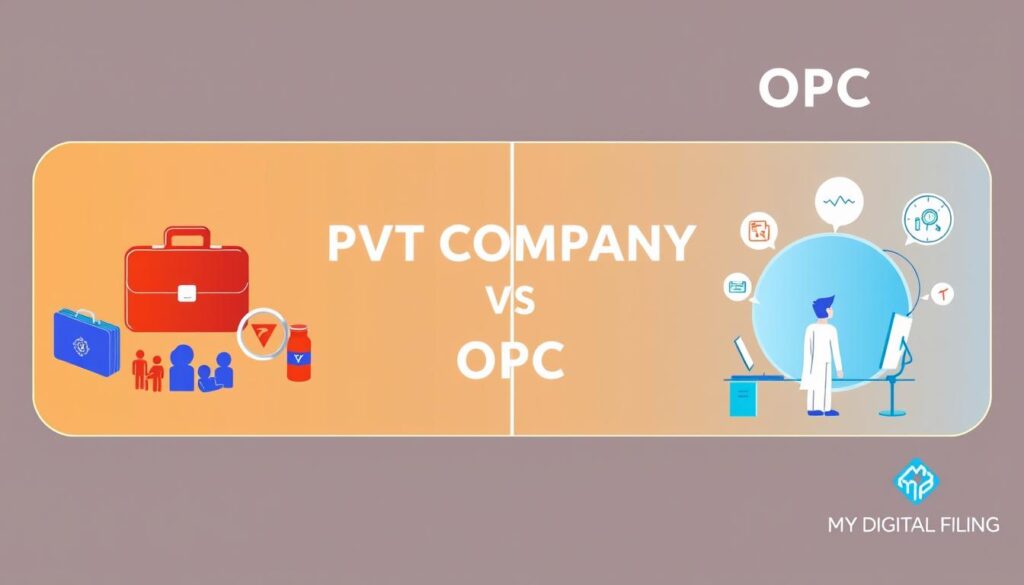Did you know 90% of Indian companies must file a DPT-3 form with the Ministry of Corporate Affairs (MCA)? This fact shows how important it is to know about the DPT-3 form guide for businesses in India. Whether you’re an experienced entrepreneur or new to the scene, understanding the MCA file dpt-3 form procedures is key. It helps keep your business in line and avoids big fines.
The DPT-3 form was introduced on January 22, 2019. It’s a detailed form for companies to report on loans and money not considered deposits. All companies, except government ones, must file this form. It covers transactions from April 1, 2014, to now. Knowing how to fill out this form is vital for businesses of all sizes.
To file the DPT-3 form right, you need to collect all the financial details of your company. This includes loans and advances for goods and services. The incorporation of a private company guide offers helpful tips on meeting India’s compliance needs, including the DPT-3 form.
The deadline for filing the DPT-3 form is June 30th each year. You have 90 days from the end of your financial year to file once. Not filing on time can lead to big fines, up to Rs. 10 crore, and even jail for company officers. Make sure you’re familiar with the DPT-3 form guide and file on time through the MCA portal.
Key Takeaways
- DPT-3 form is mandatory for all companies except government entities
- Annual filing deadline is June 30th
- One-time return covers transactions from April 1, 2014, to January 22, 2019
- Penalties for non-compliance can reach up to Rs. 10 crore
- Accurate reporting of all outstanding loans and money receipts is crucial
- Timely filing through the MCA portal is essential for compliance
Understanding DPT-3 Form and Its Importance
The DPT-3 form is key in India’s corporate world. Introduced by the Ministry of Corporate Affairs (MCA) in 2019, it makes company finances clear. Let’s explore DPT-3 and its role in small business registration in India.
What is DPT-3 Form?
DPT-3 is an annual return form for companies. It deals with different debts, like secured and unsecured ones, and borrowings. Private and public companies, as well as Section 8 Companies, must file it.
MCA Amendments and DPT-3 Compliance
The MCA rules on DPT-3 protect investors. Companies must file DPT-3 by June 30th each year. This shows their financial health and keeps things transparent.
Significance of Filing DPT-3 for Indian Companies
Filing DPT-3 is more than a rule; it’s essential for a company’s integrity. It shares important financial details, like net worth and loans.
| Aspect | Detail |
|---|---|
| Due Date | June 30th annually |
| Penalty for Non-Filing | Rs. 5,000 per day |
| Maximum Fine | Up to one crore rupees or twice the deposit value |
| Imprisonment | Up to seven years for responsible officers |
Not following DPT-3 rules can lead to big penalties. This shows how important it is for companies to follow these rules. It shows they care about being open and following good governance.
Eligibility Criteria for Filing DPT-3 Form
The DPT-3 form is needed by many companies in India. All companies, except government ones, must file it. This includes private and limited companies, as well as Section 8 companies.
The deadline for filing was April 22, 2019. Companies had 90 days from January 22, 2019, to comply.
Banking and finance companies are not required to file. But, all other companies must report loans and advances. This includes loans to subsidiaries and associates.
The form covers loans and money received, excluding deposits. Companies must report these from April 1, 2014. This ensures financial dealings are transparent.
Not filing can lead to big penalties. Companies and directors might face fines up to Rs. 1 lakh. Directors could even get jailed for up to 6 months.
Non-compliance can also block corporate actions. It can make companies ineligible for benefits under the Companies Act, 2013. To avoid these issues, file your DPT-3 form on time and accurately.
| Penalty Type | Amount/Duration |
|---|---|
| Initial Fine | Rs. 5,000 |
| Continuing Default | Rs. 5,000 per day |
| Maximum Company Fine | Rs. 10 Cr |
| Maximum Officer Fine | Rs. 2 Cr |
| Potential Imprisonment | Up to 7 years |
A Full Guide to File DPT-3 Form (MCA) for Return of Deposits
Filing Form DPT-3 is a key requirement for Indian companies. This guide will help you understand how to file Form DPT-3. You’ll learn about the documents you need and how to solve common problems.
Step-by-Step Process to Access and File DPT-3
To file DPT-3 form, follow these steps:
- Log in to the MCA portal with valid credentials
- Select “E-Filing” under “MCA services”
- Choose “Company Forms Download”
- Navigate to “Deposits related filings”
- Access “Form No. DPT-3”
- Fill in company information and search for CIN
- Complete the application and submit
Key Documents and Information Required
When preparing to file the MCA DPT-3 form, gather these essential documents:
- Auditor’s certificate
- Trust deed copy
- Deposit insurance contract
- Charge creation instrument
- List of depositors
- Details of liquid assets
Troubleshooting Common Issues During Filing
To ensure smooth filing of the deposits return form, keep these points in mind:
- Verify all information before submission as resubmission is not allowed
- Ensure your Digital Signature Certificate (DSC) is valid
- Check for consistency between web form data and attachments
- Use optional attachments for additional details if fields are insufficient
Remember, the deadline for filing Form DPT-3 is June 30th each year. Not filing on time can lead to penalties up to Rs. 5,000. There’s an additional Rs. 500 per day for ongoing non-compliance. Stay on track and avoid these fines.
Annual vs. One-Time DPT-3 Filing: What You Need to Know
Filing DPT-3 for deposits is key for MCA DPT-3 compliance. It’s important to know the difference between annual and one-time filings. This ensures you follow the rules correctly.
The one-time DPT-3 filing is for receipts from April 1, 2014, to March 31, 2019. All companies, except government ones, must file this return. This was announced by MCA on January 22, 2019.
Annual DPT-3 filings are due by June 30th each year. They cover the previous financial year. For example, the return for FY 2024-25 is due by June 30, 2025. This rule applies to all companies, not just those that take deposits.
Remember: Even if your company doesn’t accept deposits, you’re still required to file DPT-3 annually.
The DPT-3 form guide says to report all outstanding amounts. This includes government loans, financial institution loans, and money from directors or their relatives. It’s about all amounts, not just deposits under Rule 2(1)(c).
| Filing Type | Due Date | Period Covered |
|---|---|---|
| One-Time | Within 90 days of March 31, 2019 | April 1, 2014 – March 31, 2019 |
| Annual | June 30th each year | Previous financial year |
Not following DPT-3 rules can lead to big penalties. Companies might face fines up to INR 1 crore or double the deposit amount, whichever is less. Officers could get jailed for up to 7 years and fined between INR 25 lakhs to INR 2 crores.
Navigating the MCA Portal for DPT-3 Submission
Filing the DPT-3 form on the MCA portal is key for companies to follow MCA regulations on dpt-3. It needs careful attention and following specific rules.
DPT-3 Webform Accessibility
To get to the DPT-3 webform, go to the official MCA portal. You’ll need to log in with your registered details. Then, go to the e-Forms section and pick DPT-3. You can file it once or every year.
Ensuring Successful Submission: Tips and Checkpoints
Here are important things to remember when filing the DPT-3 form:
- Make sure your company is registered with MCA and has a valid CIN
- Ensure all signatories have approved DIN, valid PAN, or Membership number
- Check that the DSC is registered on the MCA portal
- Confirm no pending DIR-12/32 forms for company officers
The dpt-3 form needs correct company details, deposit info, and outstanding amounts. Attach all needed documents in the right formats. After filing, sign with your DSC and upload it quickly to avoid SRN cancellation.
| Filing Type | Due Date | Penalty for Non-Compliance |
|---|---|---|
| One-time Return | May 31, 2019 | Minimum ₹1 crore or twice deposit amount |
| Annual Return | June 30 of subsequent financial year | Up to ₹10 crore fine, 7 years imprisonment |
Remember, you can’t change the form after submitting it. To mca file dpt-3 form right, check all info before you submit. This careful approach helps avoid fines and ensures you follow the Companies Act, 2013.
Conclusion
Filing the DPT-3 form is key for companies in India to follow MCA rules. This guide shows why it’s important for keeping finances clear. Companies must file DPT-3 by June 30th each year, sharing info on deposits, loans, and more.
The MCA dpt-3 process might seem hard, but knowing its purpose makes it easier. All types of companies need to file, except banks and government bodies. The form asks for important details like CIN, address, and transaction info.
It’s vital to file DPT-3 on time to avoid fines. Companies should keep up with any changes in rules and deadlines. By using this guide and online tools, businesses can meet DPT-3 rules easily. This helps make the corporate world in India more open and honest.
FAQ
Q: What is the DPT-3 form?
A: The DPT-3 form is a document that companies must submit. It provides details about deposits and loans received. The Ministry of Corporate Affairs introduced it on January 22, 2019.
Q: Why was the DPT-3 form introduced?
A: It was created to protect creditors and depositors. It ensures companies are transparent about loans and deposits.
Q: Which companies are required to file the DPT-3 form?
A: All companies, except government ones, must file it. This includes private and limited companies, but not banks or NBFCs.
Q: When is the due date for filing the DPT-3 form?
A: Companies must file it by June 30th each year. They report all outstanding amounts as of March 31st.
Q: What are the penalties for non-filing or late filing of the DPT-3 form?
A: Not filing or filing late can lead to big penalties. This includes fines and jail time for company officers.
Q: What information is included in the DPT-3 form?
A: The form has company details like CIN and email. It also includes net worth and outstanding amounts.
Q: How can I access and file the DPT-3 form?
A: To file it, log in to the MCA portal. Then, go to “Company Forms Download” and choose “Form No. DPT-3.”
Q: What are the key documents required for DPT-3 filing?
A: You need an auditor’s certificate and a trust deed copy. Also, a deposit insurance contract and charge creation instrument are required. You’ll also need a list of depositors and details of liquid assets.










